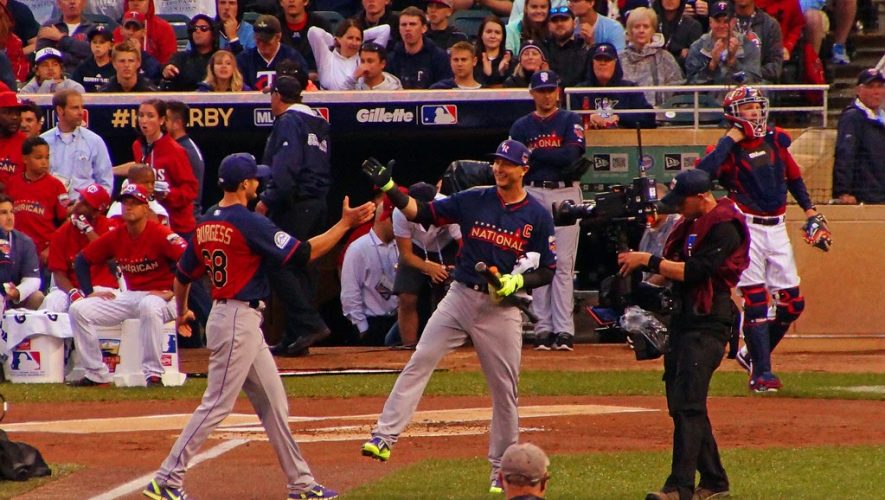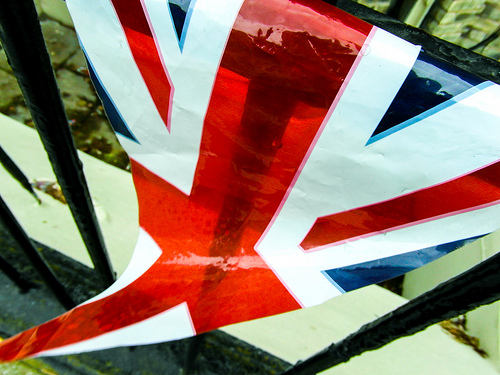Photo by Rick Burtzel
The national pastime needs national control.
Major League Baseball operates as a monopoly, enables stubborn and avaricious owners, and allows teams to take advantage of their host cities.
While the NBA and NHL implemented a centralized “bubble” as a COVID-19 safety measure in 2020, MLB allowed teams to play within their home communities. As a result, players and staff contracted and transmitted the virus among teammates and the public, often without retribution for careless conduct.
Compounded with MLB’s failure to address health and safety concerns, the organization has repeatedly condoned cheating, responding only to government intervention. When a steroid epidemic came to light in the early 2000s, MLB brass cracked down only when faced with pressure from President George W. Bush and Congress. MLB’s then-commissioner Bud Selig knew about this rampant drug abuse problem for more than a decade, yet failed to act even as steroid use increased among high school athletes. Many young baseball players lost their lives to these illegal substances—some of whom cited their favorite stars as a catalyst for taking performance enhancing drugs.
To rectify MLB’s economic exploitation of cities and communities, indifference to public health, and cavalier attitude toward detrimental behavior, the league must be stringently regulated with teams placed under public control.
Cities Strike Out
Cities often front the cost of new baseball stadium construction without reaping significant economic benefits.
Twenty-seven of MLB’s twenty-nine American stadiums received a taxpayer subsidy to finance their construction. The two exceptions—Boston’s Fenway Park and Chicago’s Wrigley Field—were erected decades before public funding became commonplace.
The most prevalent source of public funds is municipal bonds. These bonds, issued by a team’s host city, are exempt from federal taxes. This practice has led to staggering losses for the US treasury; the federal government missed out on nearly $1.6 billion in revenue since 2000.
Despite these direct subsidies, cities often agree to fund additional infrastructure improvements in areas surrounding new stadiums. While these undertakings undoubtedly facilitate economic growth and benefit communities at large, they also enrich bloated teams that do not contribute their requisite share.
In 2005, New York City Mayor Michael Bloomberg announced plans for new Mets and Yankees ballparks with a firm promise of no taxpayer subsidies. His word proved insincere, as the projects received hundreds of millions of dollars in subsidies and benefits that are not granted to most businesses. As development advanced and the price tag of the stadiums swelled, the city pumped unsightly sums into unanticipated components of the projects at the behest of team ownership.
In the late 1990s, San Diego voters signed off on constructing a new downtown ballpark for the Padres with a pledge from the city that the deal would pay for itself. Nearly two decades later, San Diego continues to pour millions from its tourism tax fund into the stadium’s operations and maintenance, siphoning money that could have been allocated to public entities.
More recently, Miami covered nearly three-quarters of the cost of the $650 million Marlins Park through high-interest-rate bonds that will eventually cost the city nearly $2 billion. The New York Times described it as one of “the more lopsided deals in professional sports,” though not uncharacteristic of stadium financing agreements. Miami has reaped few benefits from the ballpark’s construction, as the Marlins continually see record-low attendance. Faltering fan turnout compounded by a lack of new business development in the Marlins Park neighborhood has left residents disheartened. Despite acquisitive and exploitative decision making, owner Jeffrey Loria sold the team in 2017 for nearly eight times what he paid for it.
As it stands, cities do not solely fund stadiums; they often also cover peripheral infrastructure expenses to facilitate transportation to games. Take the Oakland A’s, whose stadium is accessible via a public transit system that costs billions to maintain. Or look to New York City, where the MTA spent tens of millions to renovate train stations adjacent to the Mets’ Citi Field. The MTA asked Citigroup to buy the naming rights to the station, hoping that private investment could recoup some of the cost. Citigroup refused.
Team executives claim that new infrastructure helps develop downtrodden communities and enable job growth. But there are serious questions as to whether the cities’ gains are enough to offset the teams’ appropriation of public resources.
Stadium construction is not the engine of employment that proponents claim it to be. One researcher found that jobs decrease precipitously after stadiums are built. Scholars contended that claims of massive job growth are hyperbolic. Economists concur that stadium subsidies are unviable and ineffective, with 86 percent of those surveyed advocating for their elimination.
Another study noted that many high estimates of job creation are predicated on a “multiplier effect,” in which theoretical economic growth spurs spending, jobs, and investment—meaning many venue proposals lack tangible short-term models. This multiplier effect often does not materialize; sports economist Michael Leeds asserted that if Chicago lost the Bears, Cubs, White Sox, Bulls, and Blackhawks, the economic fallout would be miniscule, adding that “a baseball team has about the same impact on a community as a midsize department store.”
Further research backs the notion that professional sports provide no significant boost to a city’s economy. In fact, they often have a negative impact, as most benefits are accrued by owners and players, not the municipalities whose taxpayers support and finance the teams.
Swing for the Fences
Especially as COVID-19 disrupts cities’ ability to repay their stadium debts, it is critical to seek solutions to such economic inequities. Proven, rational steps can be taken at the federal and local levels to increase fairness and flexibility in funding stadium construction.
Proposals to end the tax-exempt status of stadium bonds have gained traction under the Obama and Trump administrations, though they were ultimately unsuccessful. While team owners should be compelled to bear the brunt of venue funding, additional remedies are necessary to impart greater economic value to fans and communities.
Beyond economic support, baseball teams are incomparably integrated into the collective cultural consciousness of many locales. The Cincinnati Reds have been cited as an emblem of the city’s esteem for “hard work and family.” St. Louis is consistently ranked as one of the country’s top “baseball cities,” with players and team officials extolling the uniquely unabashed support of Cardinals fans. Texas Governor Greg Abbott declared “Houston Astros Day” after the team clinched the state’s first World Series title in 2017.
If cities are going to lend financial support and cultural significance to MLB, then they are entitled to a cut of teams’ economic successes. This is not a novel proposition; cities had previously sought revenue from concessions and advertising in return for public funding. However, in 1986, Congress prohibited municipalities from using stadium revenues to pay off the debt from tax-free bonds. While the provision was designed to prevent cities from assuming a disproportionate amount of a stadium’s cost, it engendered the opposite effect. Now, local governments front most of the costs while owners rake in revenue.
There are several alternative models for public ownership; the most prominent of these is the Green Bay Packers of the NFL. A nonprofit corporation owns the Packers and issues shares to hundreds of thousands of stockholders. While the stock itself hardly compares to a typical investment—it “pays no dividends, benefits from no earnings, isn’t tradeable and has no securities-law protection”—the holdings confer some control to fans and create intangible public value.
Packers’ shareholders hold voting rights and select a board of directors to manage the front office. Nominally, this allows for some level of jurisdiction over management, though fans do not play an active role in trades or free-agent signings. Nonetheless, the Packers have won more games than all but one NFL team.
What’s more beneficial is the leverage shareholders have over the team’s position in the community. The Packers’ structure has enabled the team to remain in Green Bay—by far the smallest major-league market in the country—for over a century. When the franchise was at risk of financial collapse in 1950, it issued shares of stock to local residents, the revenue from which allowed the team to remain in the area. It was later written into the Packers’ bylaws that if the team were dissolved or sold, its assets would be distributed to local organizations. The team’s board of directors operates a charitable foundation that donates millions each year to Wisconsin charities and community programs.
Stadium construction and renovation are financed by a shareholder-backed reserve fund, not municipal bond sales or tax breaks that deprive governments of revenue. While the shares are more like fan club passes than they are investment securities, there are some good ideas at play with the public ownership model.
The Institute for Local Self-Reliance, a nonprofit that combats monopolistic economic power, looks to the Packers as a prime example of protection against covetous owners. Fans are more disposed to support teams that are “permanent, rooted civic assets.” A greater number of stakeholders means greater odds of success in a smaller market.
Some minor league baseball teams have employed a similar structure. Take the Wisconsin Timber Rattlers, whose memberships allow members to vote on a board of directors, among other perks. The team’s governing organization is a self-sustaining not-for-profit, with all revenues going toward operations and stadium expenditures. The Timber Rattlers’ model has proven prosperous, as they have been featured on the list of highest-earning minor league teams eighteen times in the last twenty-five years. The Syracuse Chiefs—before they were purchased by the Mets in 2017—also had thousands of shareholders, as do the Auburn Doubledays.
A public ownership model for MLB teams would enable increased fan influence on franchises and create greater loyalty to cities by preventing rapacious owners from exploiting them. And baseball is particularly apt for the public ownership model.
Owners Play Hardball
MLB games are televised predominantly to smaller, localized markets. This contrasts with the NFL and NBA, which routinely attract millions of viewers to nationally aired games. Even MLB’s marquee matchups, like playoffs and the All-Star Game, have considerably smaller national audiences relative to the league’s competitors.
That’s not to say people don’t watch baseball, it’s just an exceptionally local sport. MLB’s strong, local fan bases attend games at a rate that outpaces the NFL and NBA, and local MLB broadcasts are among the highest-performing airings in their respective regions.
The public ownership model would be particularly effective in a sport where fans are concentrated in certain regions. Experts and scholars have proposed community ownership as a safeguard against team contraction and relocation, as fans have more cause to commit to cities than private owners.
Public stakeholders would develop systems of ownership with transparent management driven by a dedication to the sport. As it stands, MLB owners “work hard to keep their books closed to the public,” which often results in efforts to stymie investment in their teams.
Take Philadelphia Phillies owner John Middleton, who claimed last year that a staggering $2 billion in losses would prohibit the team from signing major free agents. But the Phillies’ losses amounted to just $145 million this past season. The New York Yankees—despite their status as the most valuable team in baseball and propensity to spend big on players—have claimed “massive losses” and are operating on a budget. The Tampa Bay Rays (who reached the 2020 World Series) and Chicago Cubs traded away their best pitchers to slash payroll.
Even though teams endured losses during the COVID-19-shortened 2020 season, their financial hardship is not anywhere in the range of what owners and the league asserted it was. Fangraphs investigated the finances of the Atlanta Braves—one of the few teams with accessible financial reports due to their publicly traded parent company. It found that the Braves’ television revenue compensated for a lack of fans at games; while their books were in the red for 2020, widespread declarations of devastating losses were inconsistent with verifiable financial information.
Owners’ proclivity to downplay their financial capabilities has materialized in a more systemic and persistent manner. When it appeared likely that COVID-19 would delay the season, team owners agreed to grant players full service time and prorated salaries for 2020 regardless of how many games they played. But as negotiations progressed, owners repeatedly advocated for players to take further pay cuts. Agent Scott Boras—who negotiated over a billion dollars in contracts in 2019—expressed his frustration that owners were unwilling to build off the foundation of prorated salaries that had already been codified. “You don’t privatize the gains and socialize the losses,” he said.
Beyond the benefits of community ownership in stadium construction and team expenses, public stakeholders without a profit incentive would be more inclined to protect players. And players have often advocated for their communities in the absence of—and sometimes in defiance of—owner-driven endeavors.
Mets first baseman Dominic Smith co-founded Baseball Generations, a nonprofit that works to uplift underserved Black kids through athletics. After the shooting of Jacob Blake in Kenosha, Wisconsin, Smith led a charge to boycott the Mets’ game in protest—despite team owner Jeff Wilpon’s diminished suggestion to walk off the field briefly and resume an hour later.
The Players Alliance, an advocacy group of Black MLB players, pledged that its members would donate a portion of their salaries to racial justice initiatives. Team owners, on the other hand, contribute large sums to Republican politicians whose party decries such initiatives. Four of the top ten political spenders among major sports owners are MLB owners; the chairmen of the San Francisco Giants, Atlanta Braves, and Arizona Diamondbacks have donated hundreds of thousands of dollars to Republican-affiliated political action committees.
Hardworking players contribute directly to a team’s success, so it’s important to protect them and their interests, especially against owners who boost policymakers and power brokers whose actions and rhetoric hurt communities.
Playing a Fair Game
The US government is no stranger to public ownership and nationalization. Community ownership, or even full government control, would also engender civic participation. If cities could serve as governing bodies for teams, with residents and fans as stakeholders, game revenues could be allotted to a host of local undertakings.
Participatory budgeting—which allows communities to allocate funds to municipal projects of their choosing—is taking off in major cities like New York to great effect. Underserved groups such as felons, young people, and those with barriers to civic participation—particularly people of color—can benefit greatly from participatory budgeting. Allowing team earnings to be reinvested in community-led initiatives would similarly strengthen these groups, which are disproportionately displaced by stadium construction. Even holding elections for teams’ management and front offices could increase voter turnout.
Baseball is a powerful economic, cultural, and social institution that serves as a reflection and reminder of history and behavior. Take Jackie Robinson’s trailblazing major league debut—a critical moment in the Civil Rights Movement—or the formation of the Major League Baseball Players’ Association, which paved the way for collective bargaining and organized labor in every other major sport.
A transition to public ownership would reinforce values of collectivism and engender a shift in attitudes toward community institutions. Rethinking the purpose of municipal mainstays is the first step in creating an economic system that benefits those who work to support it.



